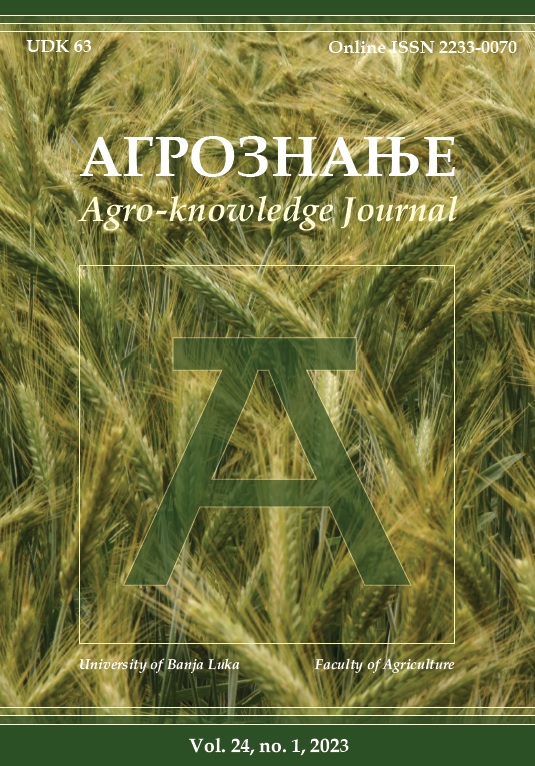The effect of cutting management on seed yield, seed yield components, and seed quality of red clover (Trifolium pratense L.)
DOI:
https://doi.org/10.7251/AGREN2301001VAbstract
Red clover (Trifolium pratense L.) is the second most important perennial forage legume in the Republic of Serbia, cultivated on 90-120.000 ha. The objective of this study was to determine the effects of cutting management on seed yield, some seed yield components, and seed quality of the NS red clover variety Una during the second and third year of growing. Five cutting managements with variable dates of initial cutting were tested in the 2019-2020 period. The first cutting was used for seed production in the C1 management and the second growth in the C2-C5 managements (C2-budding, C3-start of flowering, C4-mid of flowering, and C5-full flowering). In all cutting systems, significantly higher seed yields were achieved in the second year of growing. Unfavourable environmental conditions for pollinators as well as thinning of red clover crops in the third year of growing are the main reasons for low seed yields. The highest seed yield (539 kg/ha) was achieved in the C2 cutting management in the second year of growing. The cutting management had no significant effects on red clover seed quality.

